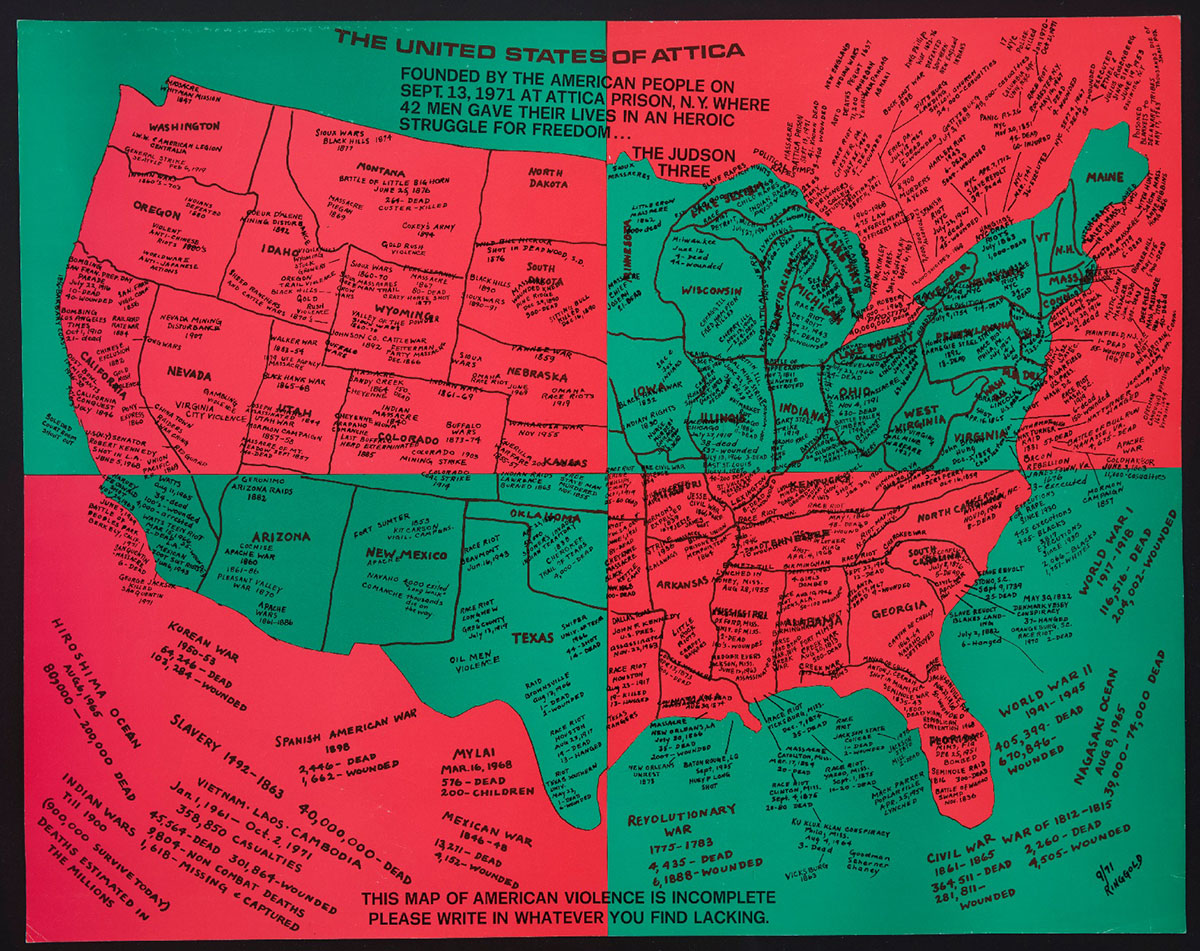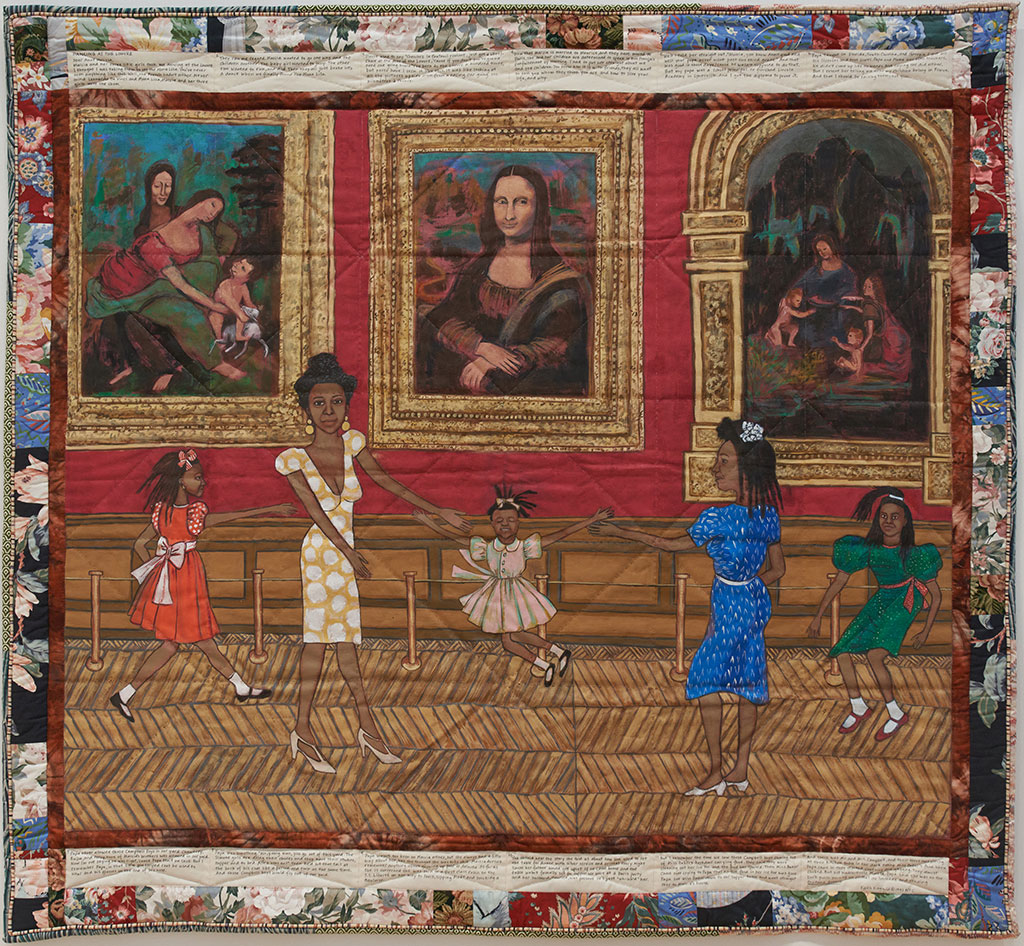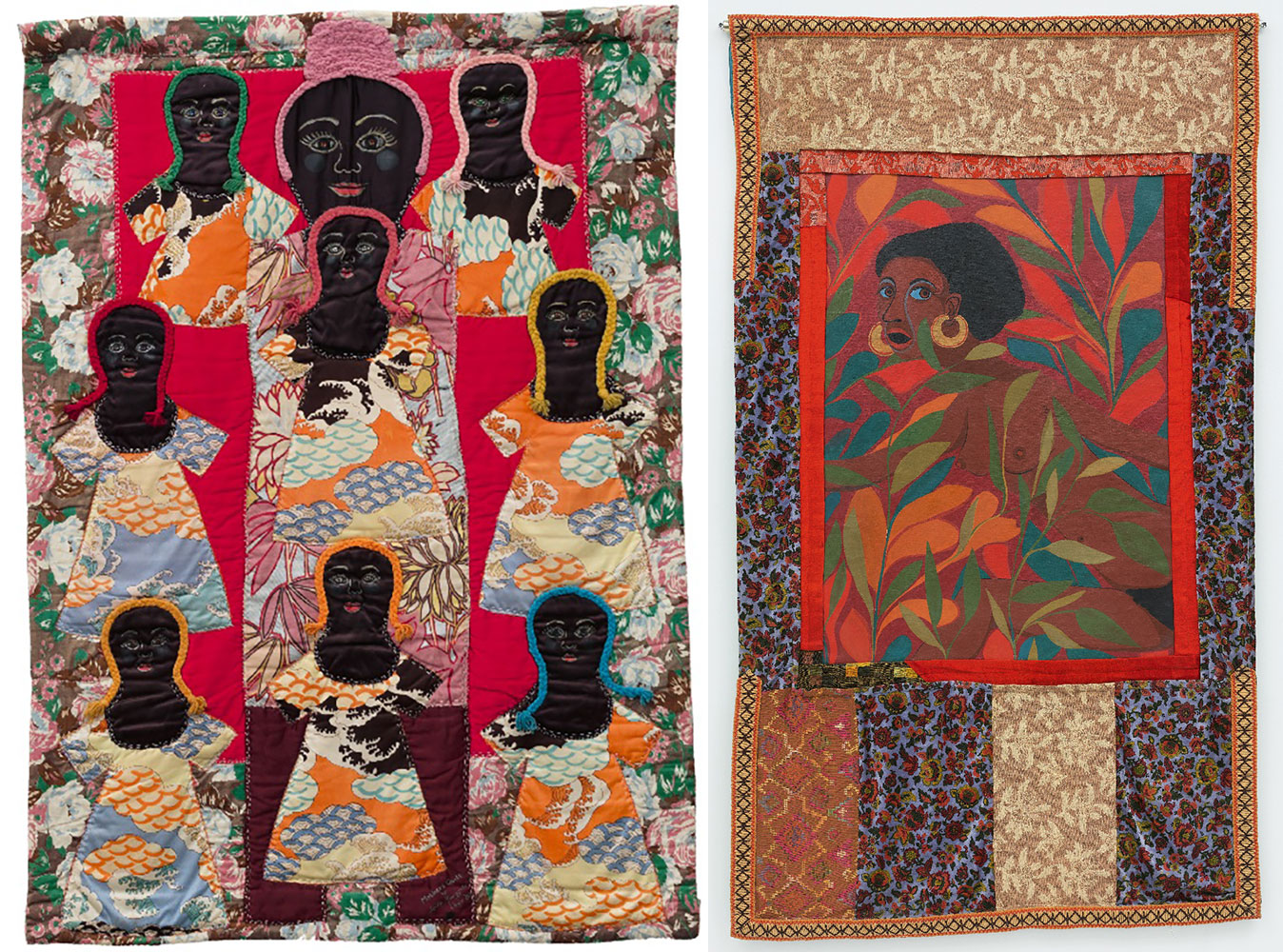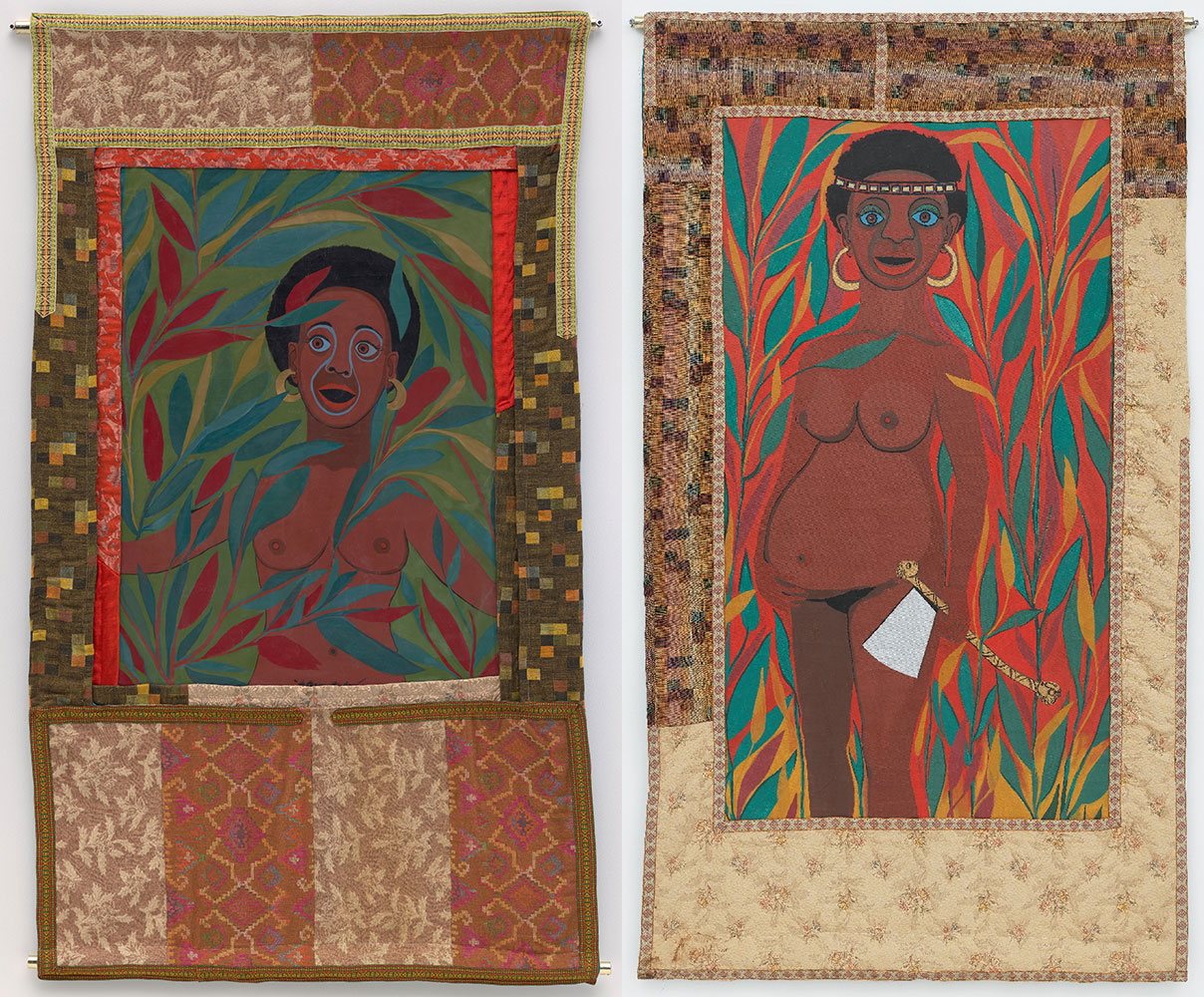PRESENTATION: Faith Ringgold-American People
 Faith Ringgold’s work as an artist, an activist, and an educator has influenced both the art world and communities beyond the art world. Her founding or co-founding of many arts organizations focused on issues faced by women of color has created many opportunities for those artists. She became famous for innovative quilted narrations that communicate her political beliefs.
Faith Ringgold’s work as an artist, an activist, and an educator has influenced both the art world and communities beyond the art world. Her founding or co-founding of many arts organizations focused on issues faced by women of color has created many opportunities for those artists. She became famous for innovative quilted narrations that communicate her political beliefs.
By Dimitris Lempesis
Photo: New Museum Archive
Bringing together over 65 years of work the exhibition “Faith Ringgold: American People” provides the most comprehensive assessment to date of her impactful vision. Faith Ringgold’s role as an artist, author, educator, and organizer has made her a legendary figure whose practice links the multi-disciplinary achievements of the Harlem Renaissance to the political art of young Black artists working today. Faith Ringgold, née Faith Jones, (8/10/1930) grew up in New York City’s Harlem, and while still in high school she decided to be an artist. She attended City College of New York, where she received a degree in fine arts and education and an M.A. in fine arts. In the mid-1950s Jones started teaching art in New York public schools, a job she held until the 1970s. After Jones married her second husband, Burdette Ringgold, in 1962, she began using his name professionally. During the 1960s, Ringgold created some of the most indelible art of the civil rights era by melding her unique style of figurative painting with a bold, transformative approach to the language of protest. In subsequent decades, she challenged accepted hierarchies of art and craft through her experimental quilt paintings and undertook a deeply studied reimagining of art history to produce narratives that bear witness to the complexity of the American experience. This exhibition features works from across Ringgold’s best-known series, tracing the development of her figurative style and political concerns as they evolved and expanded to meet the urgency of the social changes taking place in America during her lifetime.
In the early 1970s, Ringgold’s investment in the feminist movement intersected with her use of craft-based techniques, which were traditionally associated with “women’s work” and thus, often deemed unworthy artistic equivalents to the mediums of painting and sculpture. Alongside other artists influenced by feminism at the time, Ringgold defiantly dissolved the distinctions between high art and popular craft. Works created between the 1970s and the 1990s demonstrate Ringgold’s embrace of global and American craft traditions, as evinced in her performance objects, soft sculptures, and unstretched canvases adorned with sewn fabric borders inspired by Tibetan votive paintings. In these galleries, there is also a range of Ringgold’s quilts, including important cycles such as “The Bitter Nest” (1988), “The American Collection” (1997), and “Women on a Bridge” (1988. Among the most influential artworks of the past fifty years, these story quilts draw on both personal autobiography and collective histories that point to larger social conditions and cultural transformations, from the Harlem Renaissance to the realities of Ringgold’s own life as a working mother, artist, and activist. By the 1960s Ringgold’s work had matured, reflecting her burgeoning political consciousness, study of African arts and history, and appreciation for the freedom of form used by her young students. She began a body of paintings in 1963 called the “American People” series, which portrays the civil rights movement from a female perspective. One of the best-known and perhaps most unsettling is “American People #20: Die” (1967), a bold representation of contemporary race riots. Inspired by Pablo Picasso’s “Guernica” (1937), the mural presents a tangle of Black and white bodies, their doll-like eyes wide in terror, and their heads and matching attire bloodied. In a style that Ringgold called “super realism,” this work depicts the race riots of the 1960s in America as a melee of random violence. The repeating adult figures, African Americans and whites, are injured, and fighting or fleeing, while a white boy and an African American girl huddle together in the center of the canvas, framed by the falling limbs of an African American man and a white woman being shot. The violence contrasts with well-dressed appearances of the figures; the men in black pants and white shirts, the women in fashionable dresses and heels. The black and white color of the men’s clothing visually emphasizes that racism is the origins of the violence, and the well-dressed appearance conveys that no class of society is exempt. The painting is a kind of tour de force of Ringgold’s knowledge of artistic style combined with her experience of the violence generated by racism and her fear that racial violence would become endemic.
In the 1970s Ringgold lectured frequently at feminist art conferences and actively sought the racial integration of the New York art world. She originated a demonstration against the Whitney Museum of American Art that led to the inclusion of works by Betye Saar and Barbara Chase-Riboud in the 1972 sculpture biennial, and she helped win admission for Black artists to the exhibit schedule at the Museum of Modern Art. In 1970 Ringgold cofounded, with one of her daughters, the advocacy group Women Students and Artists for Black Art Liberation. She also began to explore different types of media, including soft sculptures and masks. In 1972 she started collaborating with her mother, Willi Posey Jones, who was a fashion designer, to create the “Slave Rape” series of paintings, which were inspired by Tibetan tanka (paintings framed in cloth) that she viewed on a visit to museums in Amsterdam. They also worked together to make masks for the “Family of Women” series (1973–74). In the 1980s Ringgold began working on “story quilts,” which became some of her most renowned works. She painted these quilts with narrative images and original stories set in the context of African American history. Her mother frequently collaborated with her on them. Examples include “Who’s Afraid of Aunt Jemima?” (1984), “Sonny’s Quilt” (1986), and “Tar Beach” (1988), the latter of which Ringgold adapted into the children’s book “Caldecott Honor Book” (1991-92). It tells the story of a young Black girl in New York City who dreams about flying. Ringgold’s later books for children included “Aunt Harriet’s Underground Railroad in the Sky” (1992), “My Dream of Martin Luther King “(1995), Harlem Renaissance Party (2015), and We Came to America ( 2016). Also, presented here in a landmark display is “The French Collection” (1991–97), a series of twelve story quilts exhibited in their entirety for the first time since they were shown at this Museum nearly twenty-five years ago. Conceived as an episodic tale of the fictional character Willia Marie Simone, a young Black mother living in Paris who writes detailed letters home to her Aunt Melissa about her quest to become an artist, The French Collection positions Ringgold’s own personal and professional biography in dialogue with key moments in art history. Throughout the series, Ringgold examines the lasting impact of eighteenth- and nineteenth-century white male European artists in contrast to the unrelenting exclusion of Black women from the origin story of modern art. Envisioning Willia Marie as a participant in the development of twentieth-century art, Ringgold subverts the canon in favor of an expansive narrative, in which the myths of modernity are reimagined as polyphonic histories of resistance and creativity. In the 21st century she continued to work on quilts and on various commissions.
Photo: Faith Ringgold, United States of Attica, 1972. Offset lithograph, 21 5/8 × 27 3/8 in (55 × 69.6 cm). Courtesy the artist and ACA Galleries, New York. © Faith Ringgold / ARS, NY and DACS, London, courtesy ACA Galleries, New York 2022
Info: Curator: Massimiliano Gioni and Gary Carrion-Murayari, Curatorial Assistant Madeline Weisburg, New Museum, 235 Bowery, New York, NY, USA, Duration: 17/2-5/6/2022, Days & Hours: Tue-Wed & Fri-Sun 11:00-18:00, Thu 11:00-21:00, www.newmuseum.org





Right: Faith Ringgold, Slave Rape #2: Run You Might Get Away, 1972. Oil on canvas with fabric, 92 3/8 × 52 3/8 in (234.6 × 133 cm). Glenstone Museum, Potomac, Maryland. © Faith Ringgold / ARS, NY and DACS, London, courtesy ACA Galleries, New York 2022. Photo: Tom Powel Imaging; courtesy Pippy Houldsworth Gallery, London

Right: Faith Ringgold, Slave Rape #3: Fight to Save Your Life, 1972. Oil on canvas with fabric, 92 × 50 7/8 in (233.7 × 129.2 cm). Glenstone Museum, Potomac, Maryland. © Faith Ringgold / ARS, NY and DACS, London, courtesy ACA Galleries, New York 2022. Photo: Tom Powel Imaging; courtesy Pippy Houldsworth Gallery, London
